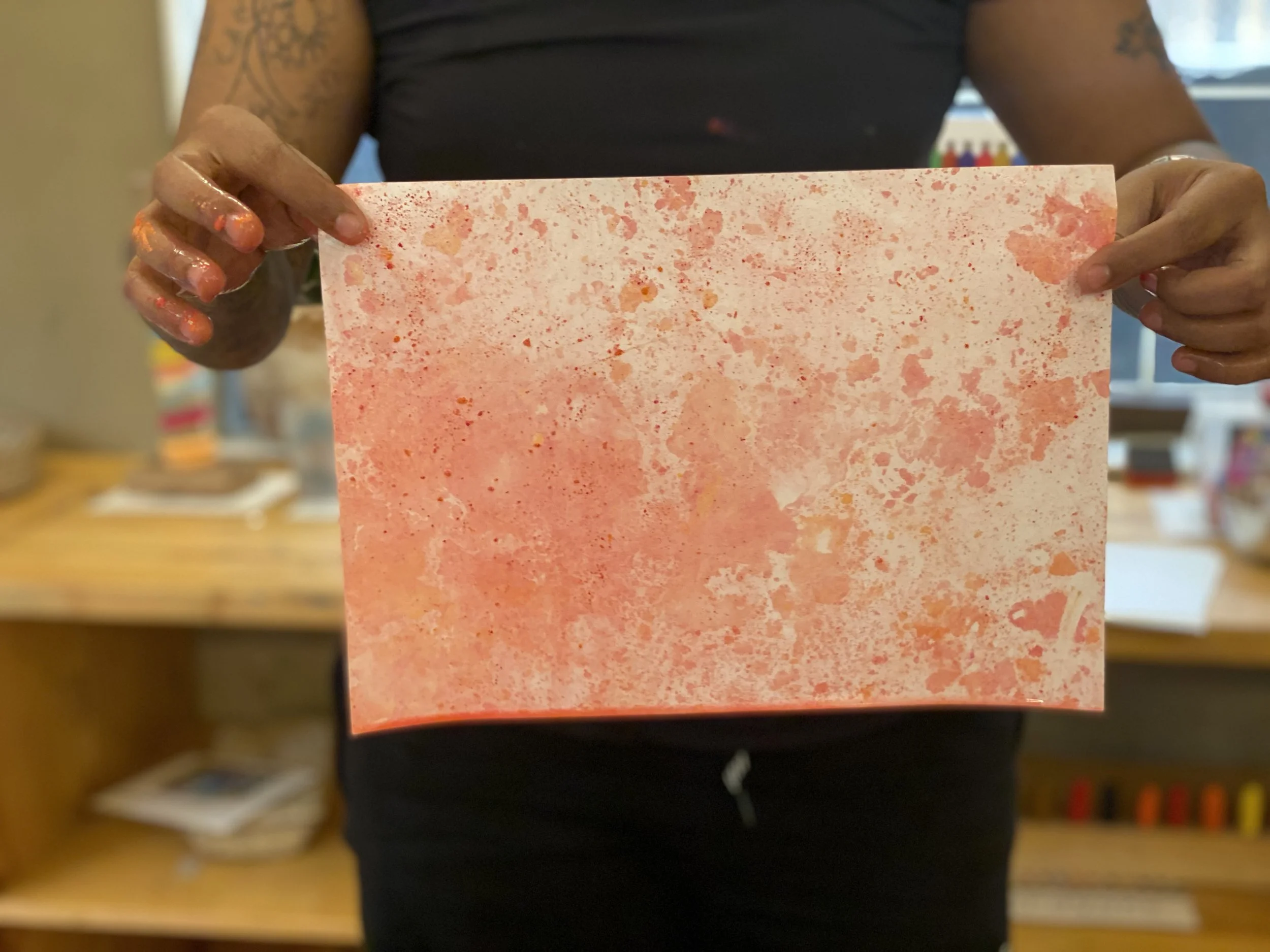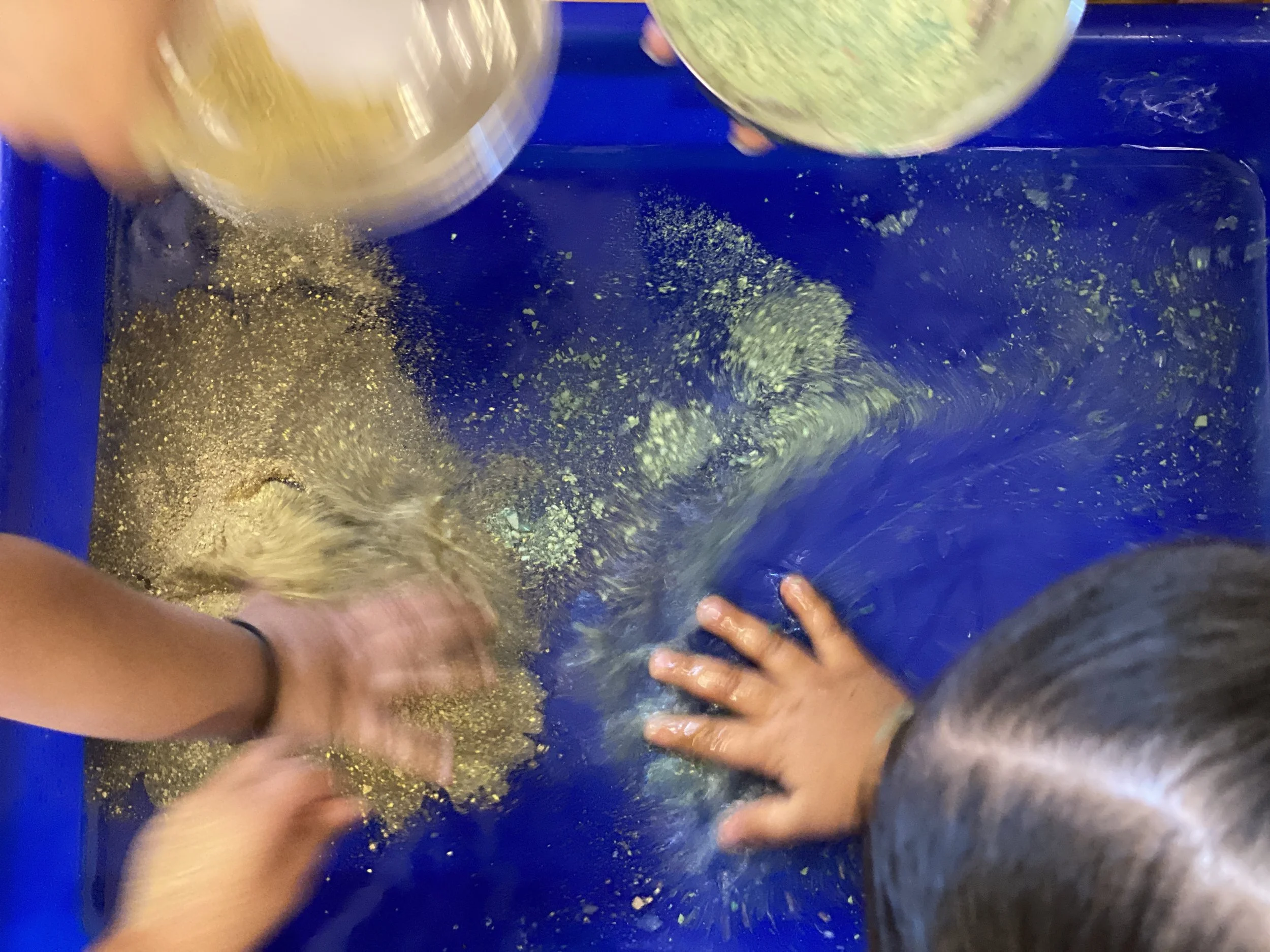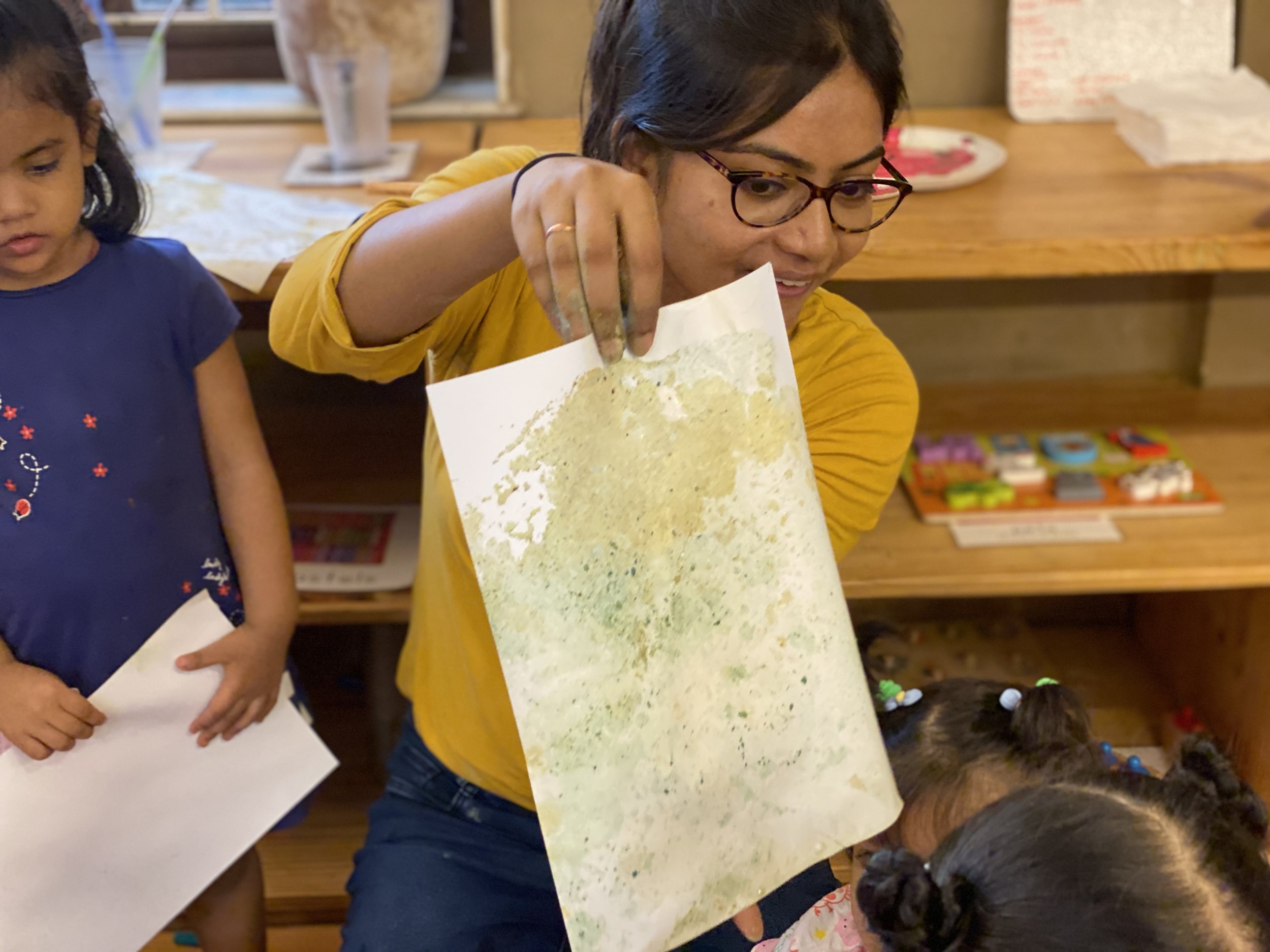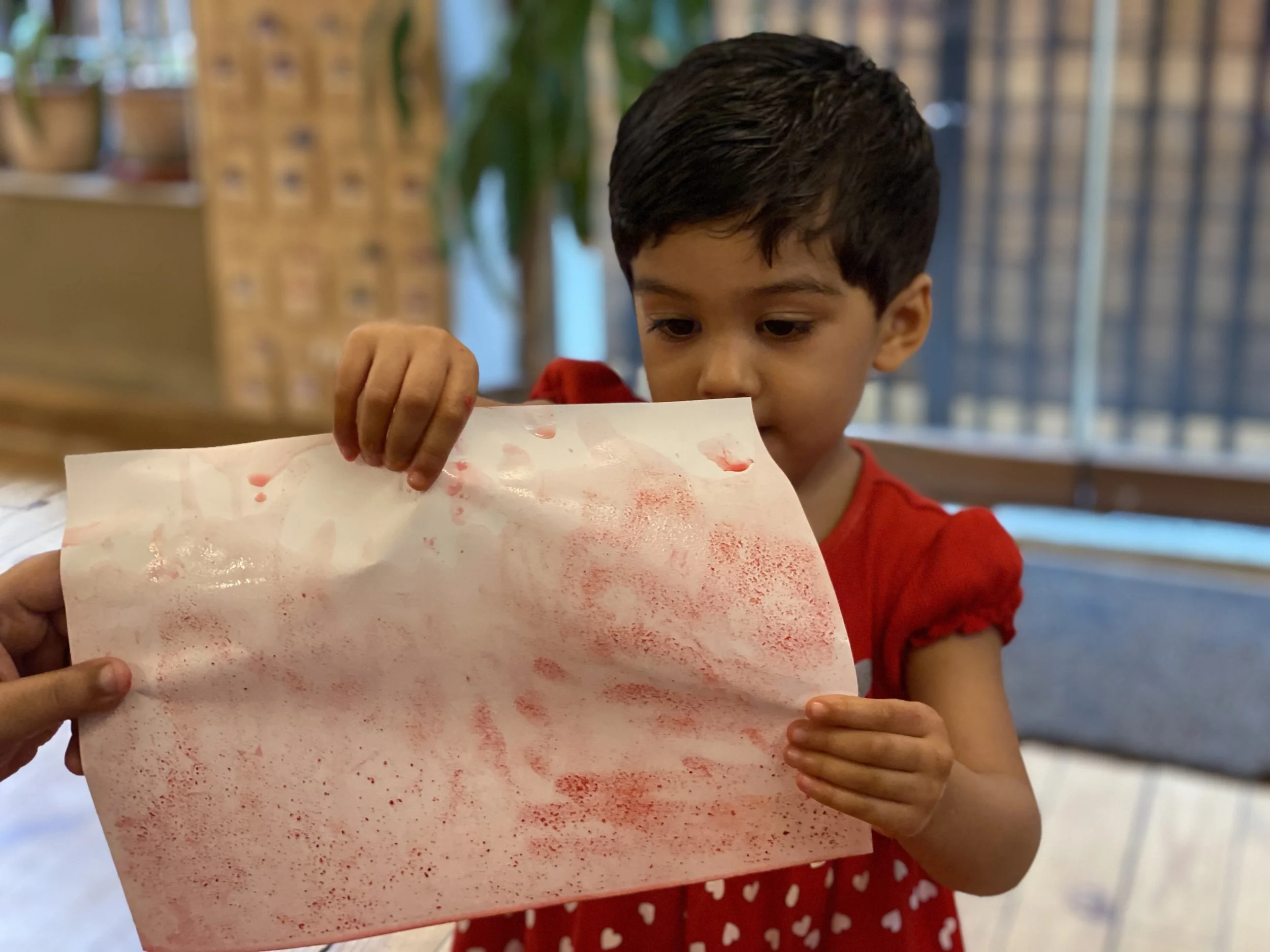Chalk Painting
Date: 4th july 2022
When was it done: Small group
MATERIALS REQUIRED:
Chalk dusted/grated
Tray
Water
A4 size paper
ACTIVITY PREP:
Colorful chalks were grated into 4 different bowls, trays were set with A4 size papers and bottles filled with water.
INVITATION SET UP:
We kept the trays and showed the colorful chalk dust to kids to increase curiosity. On one side of the tray one educator was on alert to make sure the tray does not flip and also to help the facilitator manage the crowd. The facilitator talked about the different colors of the chalk and also made the kids feel it.
PROCESS:
At first, the empty tray was kept on the table, and the facilitator asked the kids to squeeze water from the bottle in it. This helps in fine motor development and understanding the quantity of water, so it does not spill out of the tray. Then a little bit of chalk dust was taken by the facilitator and sprinkled on the water, and an empty sheet of paper was placed and pressed against the tray, which when removed revealed colourful patterns on the paper. This same process was then repeated by the kids with the help of the two educators present at each table.
CHILDREN’S RESPONSE:
As a result, the children made beautiful patterns and colours by mixing different chalk colours. Later in the activity, they mixed a little bit of water into the chalk dust and started using their hands to colour by dabbing and stroking on papers and themselves.
PRECAUTIONS:
Being proactive and keeping in mind that no kid ends up putting the chalk dust on their eyes and mouth.
SKILLS & CONCEPTS:
Fine motor skills: The activity included squeezing water bottles in trays and taking a pinch of chalk dust to sprinkle it on them.
Hand-eye coordination: Pouring and adding the dust helped kids understand the correct amount required for it.
Cognitive skills: Recognizing different colours and feeling different textures with their hands helped the kids develop a distinction between wet and dry chalk.
Attention: Staying involved in the activity requires a good amount of listening and following instructions demonstrated by the facilitator.








